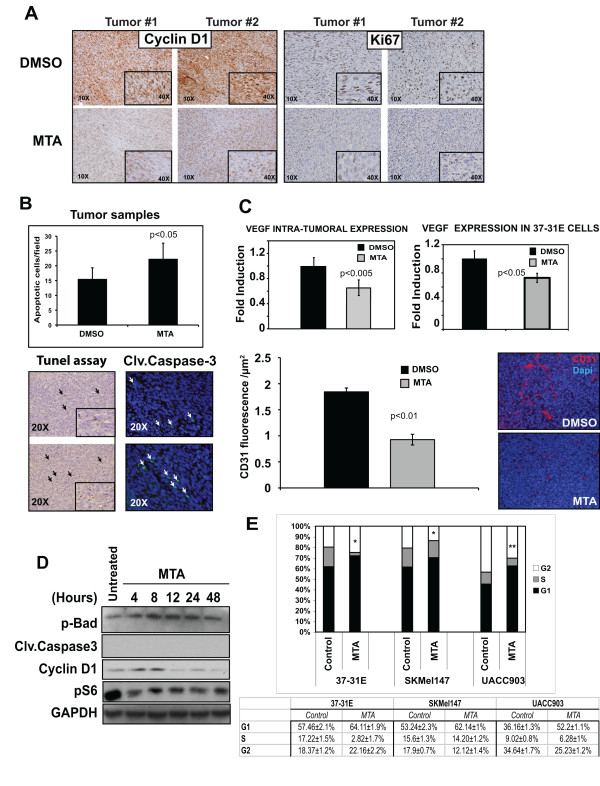Figure 4.
Methylthioadenosine (MTA) promotes cytostatic effects rather than pro-apoptotic effects in melanoma tumors and cells. (A) Tumor sections from mice treated either with DMSO or MTA were stained with cyclin D1 and Ki67 antibodies. Representative pictures are shown. (B) Quantification of apoptotic cells within the tumors. Paraffin-embedded tumor samples were subjected to TUNEL assay or stained against cleaved caspase-3. Graph shows the quantification of the TUNEL assay. Positive cells from ten fields (20×) per sample were quantified and the average number of cells per field was calculated. (C) Upper graph, quantification by qRT-PCR of VEGF levels in tumor samples. Lower graph, qRT-PCR of VEGF expression levels. 37-31E were untreated (Control) or treated for 48 h with 10 μM of MTA in complete medium. Microvessel's density quantification in xenografts. Graph shows CD31 fluorescence per μm2. Representative pictures are showed on the right. p-values were calculated performing a t-student test. (D) 37-31E cells were treated with MTA (10 μM) for the time points indicated. Fifty micrograms of total lysates were resolved by PAGE-SDS. p-Bad, cleaved-caspase3, p-S6 and cyclin D1 protein levels are showed. GAPDH is used as a loading control. (E) MTA treatment induces a slowdown cell cycle G1 phase. Cells were grown in complete medium for 48 h in the presence or absence of MTA (10 μM). Cell cycle analysis was measured in triplicates using Cell Cycle Analysis Guava-Viacount reagent (Guava Technologies). Average of the three samples in each phase of the cell cycle are shown. p-values were calculated performing a t-student test (* = p < 0.05; ** = p < 0.01).

